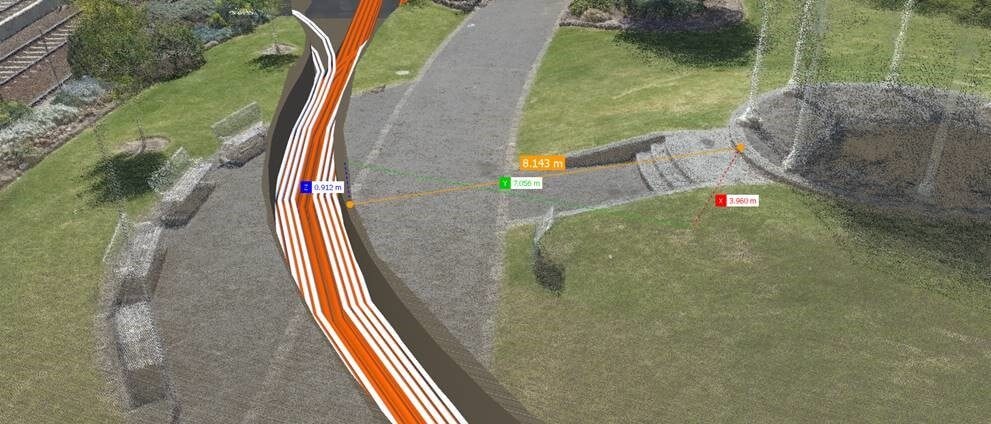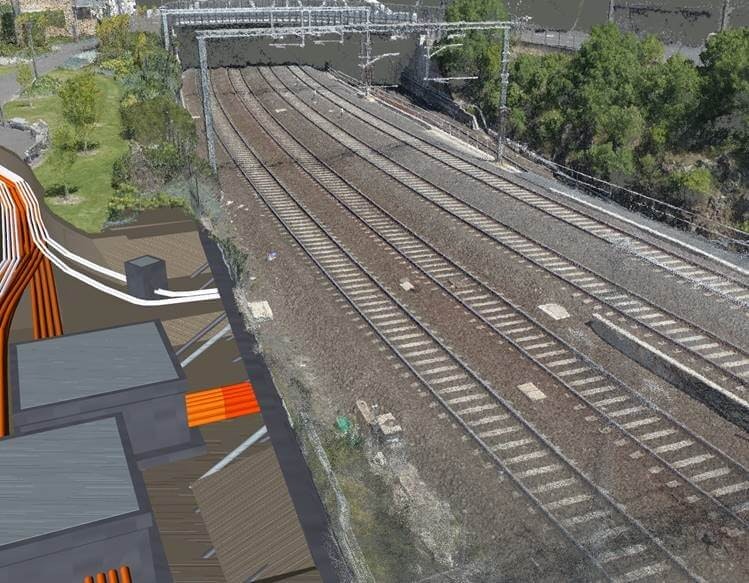At FSC, we’re experts at using Digital Engineering to de-risk and streamline design and construction projects
If you’d like to hear more about how we can help you build better, get in touch.
Digital Engineering involves the use of a number of integrated digital technologies and methodologies, such as BIM (or Building Information Modelling) and GIS (Geographic Information Systems) to drive better project, business and asset management outcomes. Compared to traditional construction processes, digital engineering helps to greatly reduce time and rework, and saves money.
The terms “BIM” and “Digital Engineering” are often used interchangeably, but in fact BIM is just one aspect of Digital Engineering, albeit a critically important one. BIM, or Building Information Modelling, is a 3D modelling process that gives architects, engineers, designers and construction professionals the insight to more effectively plan, design and construct buildings and physical infrastructure. At its core, BIM is a 3D digital representation of a built asset.
Digital Engineering, on the other hand, is not a single piece of software or tool, but is an entire methodology that is supported by many different technologies.
Digital Engineering can be used to optimise all phases of the construction process, from planning to design to site management. Digital Engineering enables entire teams to work together to design and build buildings and infrastructure using the same models. Because all disciplines are working together to create the virtual model, they can identify and avoid any issues or errors and work together to make informed decisions about a project, all long before physical construction starts.
Yes, the technology that underpins Digital Engineering is important, but the methodology is perhaps more important – Digital Engineering leverages shared digital resources, communication channels and project management tools so that everyone working on a given project can collaborate, plan, build and operate a building. All while keeping everything documented in a single source of truth that everyone can access.
Using BIM software, we set up an accurate federated 3D digital model that all disciplines and team members have access to – designers, architectes, construction crews and even our clients. This database stores the 3D model, as well as all the information relevant to the model. If someone changes a piece of information, the model is updated in real-time, facilitating efficient collaboration, and quick identification of clashes and other construction issues.
Traditionally, it has been difficult for project teams to accurately estimate budgets, project schedules and resource requirements. Unfortunately, project delays are commonplace and inefficient resource management can have an impact on the environment. Australia’s construction industry produces 20M tons of waste each and every year – this is something we care deeply about and are working hard to address. Our team of engineering experts specialise not only in infrastructure design and construction, but also in environmental and sustainability consulting, and we’re passionate about finding better ways to manage our projects and minimise their environmental impact.
That’s one reason we love Digital Engineering. Providing a highly accurate federated 3D model early on in the design process helps to reduce time and costs for all parties involved from conception to handover. It also helps our teams streamline the construction phase, foresee and avoid any design errors before they happen, and minimise human error that might otherwise lead to waste, delays and expensive repairs. At FSC, we believe projects should be built twice; once digitally and once in the real world.
Greater efficiency leads naturally to shorter project lifecycles. And generally, the shorter a project, the less it will cost. Digital Engineering enables engineers, architects, and construction specialists to design buildings, propose and share solutions with clients, and get started on construction faster. It also streamlines workflows on site, so projects run smoother and faster. There’s also less risk of rework being required, meaning projects are more likely to finish on schedule and on budget.
Digital Engineering employs technologies related to BIM processes to visualise infrastructure in 3D. Unlike 2D drawings, BIM gives architects, engineers, designers and clients the ability to immerse themselves in the design. We call it a ‘digital twin’. Giving architects and designers the ability to visualise a building in the pre-construction phases empowers them to really push the boundaries of their creativity and architectural designs. It also gives clients an opportunity to provide feedback on designs before construction begins, improving client satisfaction with the final project and avoiding any costly rework later down the track.
Digital Engineering provides project teams with a better way to plan a project, manage a work site, analyse risks and avoid accidents. The Digital Engineering tools we use hold all the documents relating to a project, including regulations and building manuals, making for a safer construction site. And because they enable us to visualise and simulate scenarios before construction begins, we can identify and avoid hazards before they become a problem. On site, Digital Engineering tools and processes help site managers reduce on-site risks through features such as compliance checking, scenario planning, pre-fabrication tools and clash checking.
A key benefit of Digital Engineering is its ability to detect and avoid clashes. These clashes could be physical clashes between two structures, such as a steel beam and electrical fittings, or workflow clashes between construction crew and conflicting timelines. The collaborative nature of Digital Engineering enables us to identify these conflicts and reduce project errors with automated ‘clash detection’. The software flags these errors, reduces human error and creates efficiencies in the construction process. By avoiding clashes, the risk of delays, rework and unforeseen issues is dramatically reduced.
FSC was engaged by Metro Trains Melbourne (MTM) to design and construct new infrastructure in Footscray, Victoria as part of the Melbourne Metro project.
The project included installing conduits and a pit for new power infrastructure in a challenging location between a retaining wall along a live train line and a heritage-protected gazebo.
FSC’s Digital Engineering team developed a model with our construction team to ensure the works could be safely constructed and risks to sensitive assets could be mitigated.
If you’d like to hear more about how we can help you build better, get in touch.


